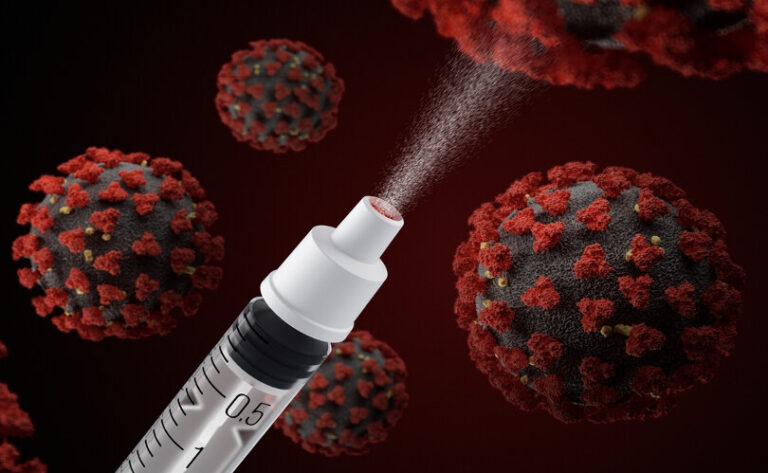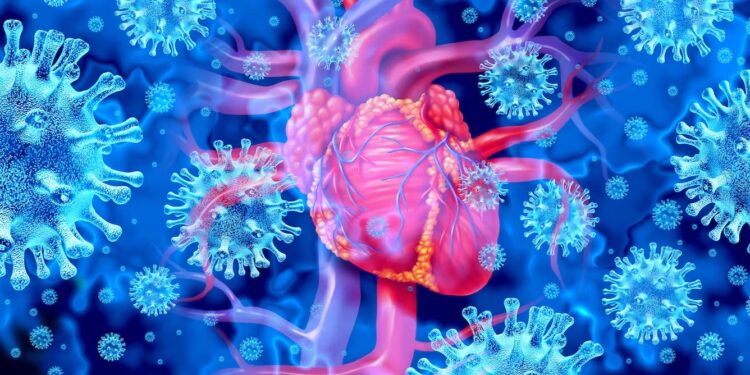New COVID Variant ‘HV.1’ Has Surprising Mutations

The new variant is on the rise in the United States has features of Eris and 2022’s delta variant. What’s the impact?
According to the latest Centers for Disease Control and Prevention (CDC) report, a new COVID-19 virus variant known as HV.1 has surpassed EG.5 (Eris) as the leading variant diagnosed in the United States.
HV.1 prevalence has increased from 1.1 percent in early August to 25.2% of COVID cases. Meanwhile, EG.5 fell from 24.3 percent on September 30 to 21.9 percent today in just one month.

HV.1 spreads more quickly
HV.1 comes after EG.5, which is a descendant of XBB.1.5, or the Kraken. EG.5’s global prevalence increased due to its fast transmission rate and superior ability to evade immunity thanks to its F456L mutation, prompting the World Health Organization (WHO) to classify it as a “variant of concern” (VOC) in early August.
HV.1 has almost all of the spike mutations that EG.5 has, including F456L. HV.1 does, however, have one surprising additional mutation: L452R. The L452R mutation, which increases infectivity, is one of the delta variant’s key mutations in 2021, but it is missing in the omicron variant.
How could this be? The unpredictability of these COVID virus variants should remind us of quantum physicist Heisenberg’s uncertainty principle. In the microscopic realm, physicists cannot determine the position or speed of a particle. Similarly, virologists are unable to determine the mutation sites or the rate at which COVID variants mutate in the viral realm.
According to a recent study conducted by Peking University assistant professor Yunlong Cao and his colleagues, HV.1 has slightly better transmissibility than the previous dominant strain EG.5, because its binding affinity to the ACE2 receptor is slightly higher. Omicron subvariant HK.3 (FLip) and JN.1, which have much lower binding affinities, are two more concerning strains.
HV.1 is more resistant to vaccines.
HV.1 has the potential to render the current COVID-19 vaccines ineffective because it is more resistant to vaccine-induced immunity than EG.5. This means that none of the current COVID vaccines can generate any effective antibodies capable of binding HV.1.
This is due to the key mutations F456L, L452R, F157L, and Q52H in the variant. These most recent mutations suggest that the new omicron variants have devised devious strategies to avoid our man-made vaccines by explicitly targeting specific sites. They may be able to avoid the protective effects of vaccination in this way, potentially leading to outbreaks of infection among the vaccinated.
The virus’s increased transmissibility and evasiveness help to explain the rising curve observed in the CDC report.
According to Mr. Cao’s experimental data, HV.1 has shown a further reduced antibody-neutralizing response, increasing the chances of reinfection or breakthrough infections.
The Virus Adapts Quickly
Since 2022, omicron sublineages have discovered new ways to avoid our immune responses, increase transmissibility, and achieve more reinfections.
The ability of SARS-CoV-2 to mutate is thought to be much faster than that of many other endemic viruses. It mutates seven times faster than other coronaviruses and 2.5 times faster than the influenza virus, a well-known virus with rapid antigen mutation.
Why? A virus is an intelligent organism that is constantly trying to survive. To achieve its goal, it must evolve and outpace humanity’s development of new vaccines.
One widely held belief is that the rapid, massive vaccination campaign put SARS-CoV-2 under unprecedented selection pressure. This is referred to as population immunity pressure.
Beginning in late 2022, a slew of new omicron-lineage variants, including XBB.1.5, XBB.1.16, EG.5, and HV.1, have emerged. These spread more quickly and efficiently, and they are increasingly evading current COVID vaccines.
Will HV.1 Symptoms Become More Severe?
According to current research, HV.1 will most likely cause the same symptoms as an omicron infection, such as coughing.
Fatigue.
Congestion.
Nasal congestion.
The severity of HV.1 symptoms will most likely vary between individuals.
The virus is an external condition, whereas our immune systems are internal, but our innate immunity is a more fundamental factor that will determine the battle’s outcome.
We have no control over how the virus will mutate. We can, however, control our lifestyles: what we eat, when we go to bed, whether we go for a daily walk outside, and even our attitude toward life. All of these things are important.
Taking vitamins D and C, as well as trace minerals, staying calm and optimistic, and avoiding stress, anxiety, and depression will all help our immunity.
When exposed to the same virus, those with stronger antiviral immunity will fare better than those with weaker immunity. To defeat the virus, we must employ the tried-and-true strategy of boosting our immunity.





